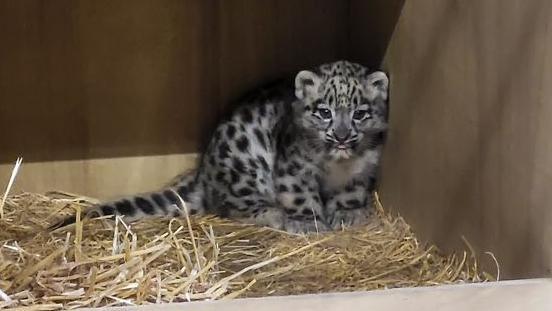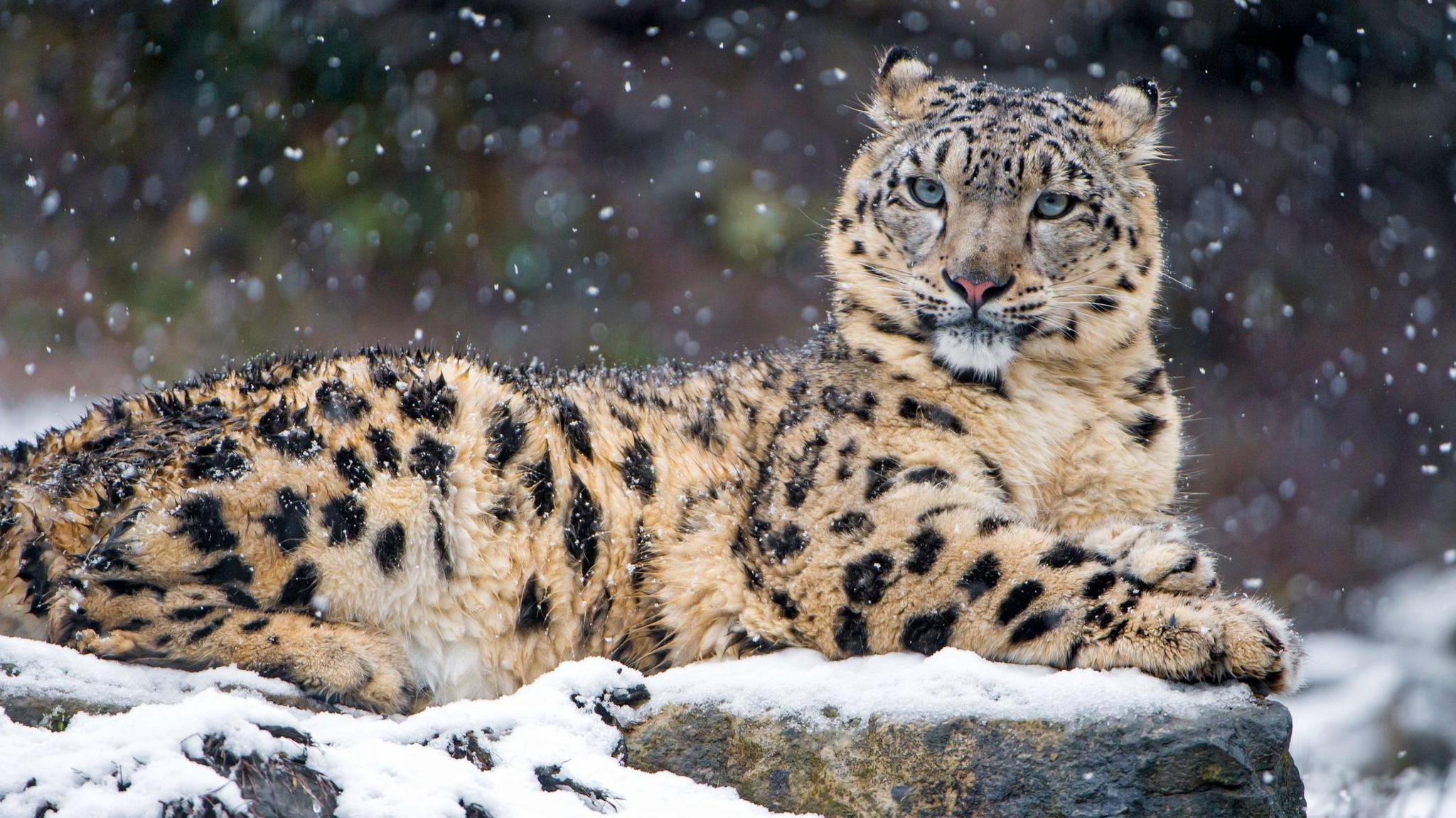First ever snow leopard cub born at Chester Zoo

The cub is only a couple of weeks old and doesn't have a name yet - let us know what you'd call it in the comments
- Published
An adorable baby snow leopard has been born at Chester Zoo as part of a conservation effort to save the incredibly endangered species.
Parents Nubra and Yashin, both three years old, gave birth to the cub on 10 July and have been caught on camera getting cosy with the newest addition to their family.
Baby snow leopard born at Chester Zoo
It's the first snow leopard to be born at the zoo in its history, and keepers there are over the moon.
Dave Hall, Team Manager of carnivores at Chester Zoo, said: "It's a truly historic moment and a real cause for celebration - not just for our teams here but also for the future of this magnificent species globally."
More on snow leopards
Spots of joy: Snow leopard cub born at UK sanctuary
- Published29 May
Rare snow leopard cub born in Wales zoo
- Published2 July 2024
Endangered species
With only 4000 snow leopards left in the wild, the species is categorised as vulnerable by the International Union for the Conservation of Nature (IUCN), which means they're at risk of extinction.
Extinction is when a species does not exist anywhere and has disappeared from the planet altogether. Famous examples include the dodo, quagga and Tasmanian tiger.
The snow leopard cubs' parents were matched together in 2024 as part of a conservation programme to ensure the survival of the big cat species, something organisations around the world are trying to help with too.

Snow leopards are well adapted to their freezing, mountainous habitats
Dr Mayukh Chatterjee, Regional Field Programme Manager for Asia at Chester Zoo, added:
"While this birth is a significant moment for snow leopard conservation, our work to help this species thrive extends far beyond our zoo.
"We're working alongside The Snow Leopard Trust and communities in countries like Kyrgyzstan to protect snow leopards in the wild, while also improving livelihoods for people who live alongside them.
"The birth of a cub here in Chester, alongside our conservation work in the wild, is a powerful symbol of what we can achieve together to help these iconic big cats thrive long into the future."
Snow leopard fact file
Their scientific name is Panthera uncia
They live in the high mountain ranges of Central and South Asia, including the Himalayas
Their thick white and grey fur helps them survive in cold climates, as it traps heat in
They can't roar like other big cats they're related to, but they can yowl
Even though they're called leopards, they're more closely related to tigers
